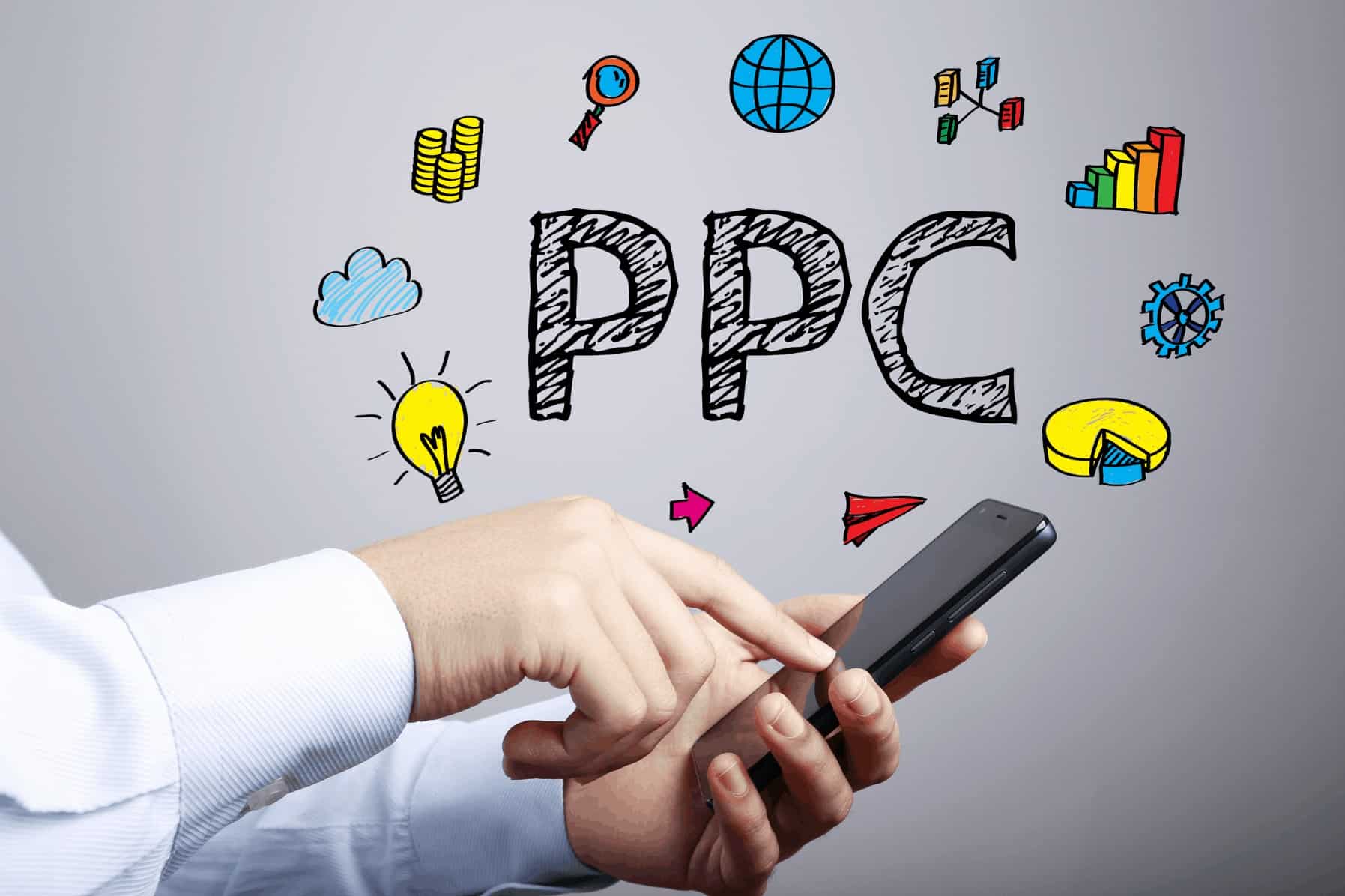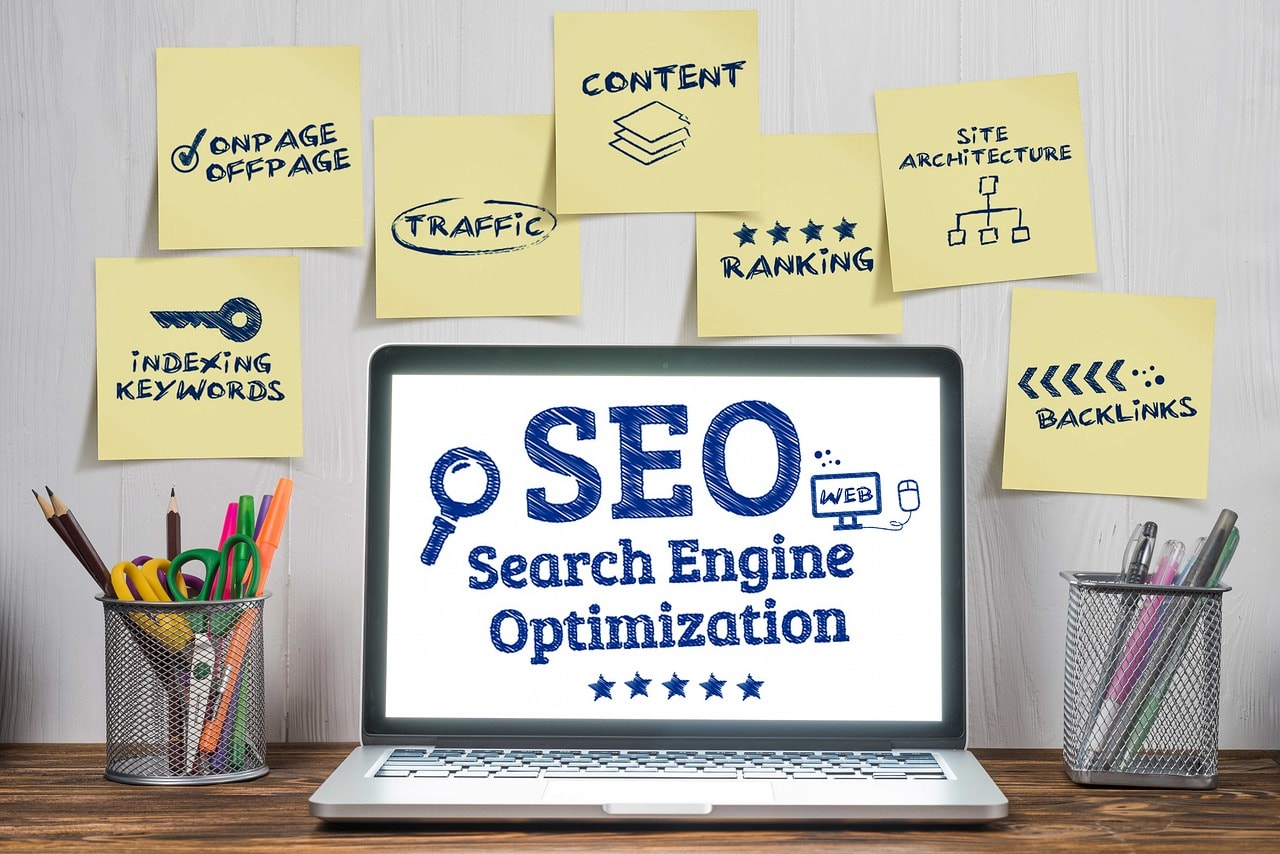Pay-per-click (PPC) advertising is one of the most effective ways to drive targeted traffic to your website and generate leads for your business. But it can also be a daunting and costly endeavor if you don’t know what you’re doing.
That’s why we’ve created this ultimate guide to PPC ad management for small businesses. In this guide, you’ll learn everything you need to know about PPC, from choosing the right platform and keywords to creating compelling ads and optimizing your campaigns.
Whether you’re new to PPC or want to improve your existing skills, this guide will help you master PPC ad management and grow your business online.
What is PPC Ad Management?
PPC ad management is the process of overseeing and optimizing your paid advertising campaigns on search engines, social media platforms, or other websites. It involves:
- Setting goals and budgets for your campaigns
- Researching and selecting the best keywords and audiences for your ads
- Creating and testing different ad variations and landing pages
- Tracking and analyzing your campaign performance and ROI
- Making adjustments and improvements based on data and feedback
PPC ad management requires a lot of time, effort, and expertise. You need to constantly monitor your campaigns, test new ideas, and keep up with the latest trends and best practices. That’s why many small businesses choose to outsource their PPC ad management to a professional agency.
Jordan Digitals is a digital marketing growth partner that offers tailored marketing services for small businesses. Our services include website and mobile app design, PPC ad management, SEO, lead generation, and email marketing. We can help you create and manage effective PPC campaigns that drive results for your business.
Why Should You Use PPC Advertising for Your Small Business?
PPC advertising has many benefits for small businesses, such as:
- Reach: You can reach millions of potential customers who are searching for your products or services on search engines like Google or Bing, or browsing social media platforms like Facebook or LinkedIn.
- Targeting: You can target your ads based on various criteria, such as keywords, location, demographics, interests, behavior, or remarketing lists. This way, you can show your ads to the most relevant and qualified audience for your business.
- Control: You have full control over your ad budget, bids, schedule, and placement. You can also pause or stop your campaigns at any time if you need to.
- Flexibility: You can create different types of ads, such as text, image, video, or carousel ads, depending on your goals and preferences. You can also test different ad variations and landing pages to see what works best for your audience.
- Measurability: You can track and measure every aspect of your PPC campaigns, such as impressions, clicks, conversions, cost-per-click (CPC), cost-per-acquisition (CPA), return on ad spend (ROAS), and more. You can also use tools like Google Analytics or Facebook Pixel to track the behavior of your website visitors after they click on your ads.
How to Build a PPC Campaign for Your Small Business
Building a PPC campaign for your small business can be broken down into seven steps:
- Define your goals and budget
- Choose the right platform
- Conduct keyword research
- Create your ad copy and landing page
- Set up your campaign structure
- Launch and monitor your campaign
- Optimize your campaign performance
Let’s go through each step in detail.
1. Define Your Goals and Budget
The first step of PPC ad management is to define your goals and budget for your campaign. What do you want to achieve with your PPC ads? Do you want to increase brand awareness, generate leads, drive sales, or something else? How will you measure your success? What key performance indicators (KPIs) will you use?
Your goals should be SMART: Specific, Measurable, Achievable, Relevant, and Time-bound. For example:
- Increase website traffic by 20% in the next three months
- Generate 50 qualified leads per month with a CPA of $10 or less
- Drive 10 sales per week with a ROAS of 300% or more
Once you have defined your goals, you need to set a budget for your campaign. How much are you willing to spend on PPC advertising? How much can you afford to pay per click or per conversion? How will you allocate your budget across different platforms or campaigns?
Your budget should be realistic and based on data. You can use tools like Google Keyword Planner or Facebook Ads Manager to estimate the cost and potential reach of your ads based on different keywords or audiences.
2. Choose the Right Platform
The next step of PPC ad management is to choose the right platform for your campaign. There are many PPC platforms available, but the most popular ones are:
- Google Ads: Google Ads is the largest and most widely used PPC platform. It allows you to create text, image, video, or shopping ads that appear on Google’s search engine results pages (SERPs), partner sites, or display networks. Google Ads is ideal for reaching customers who are actively searching for your products or services, or who have shown interest in your industry or niche.
- Bing Ads: Bing Ads is similar to Google Ads, but it runs on Microsoft’s search engine and partner sites. Bing Ads has a smaller market share than Google Ads, but it also has lower competition and CPCs. Bing Ads is a good option for targeting customers who use Bing as their default search engine, or who are in specific demographics or locations that favor Bing over Google.
- Facebook Ads: Facebook Ads is the leading social media advertising platform. It allows you to create image, video, carousel, or collection ads that appear on Facebook’s news feed, stories, marketplace, or audience network. Facebook Ads is great for reaching customers who are browsing social media, or who have expressed interest in your brand or similar brands.
- LinkedIn Ads: LinkedIn Ads is the premier B2B advertising platform. It allows you to create text, image, video, or carousel ads that appear on LinkedIn’s feed, inbox, or network. LinkedIn Ads is perfect for reaching professionals who are looking for solutions or opportunities in their industry or role.
Each platform has its own advantages and disadvantages, so you need to choose the one that best suits your goals, audience, and budget. You can also use more than one platform to diversify your reach and optimize your results.
3. Conduct Keyword Research
Keyword research is the process of finding and selecting the best keywords for your PPC campaign. Keywords are the words or phrases that users type into search engines or use to describe their interests or needs on social media.
Choosing the right keywords is crucial for PPC ad management because they determine when and where your ads will show up, and how much you will pay for each click. You want to choose keywords that are relevant to your business, have high search volume or demand, and have low competition or cost.
There are many tools and methods you can use to conduct keyword research, such as:
- Google Keyword Planner: Google Keyword Planner is a free tool that helps you find and analyze keywords for Google Ads. It shows you the monthly search volume, competition level, and suggested bid for each keyword. It also helps you discover new keyword ideas based on your website, product, or category.
- Bing Keyword Research Tool: Bing Keyword Research Tool is a free tool that helps you find and analyze keywords for Bing Ads. It shows you the monthly search volume, trends, and related keywords for each keyword. It also helps you filter keywords by language, country, or region.
- Facebook Audience Network: Facebook Audience Network is a free tool that helps you find and analyze audiences for Facebook Ads. It shows you the size, demographics, interests, and behaviors of different audiences based on your keywords. It also helps you create custom audiences based on your website visitors, email lists, or app users.
- LinkedIn Campaign Manager: LinkedIn Campaign Manager is a free tool that helps you find and analyze audiences for LinkedIn Ads. It shows you the size, demographics, job titles, skills, and industries of different audiences based on your keywords. It also helps you create matched audiences based on your website visitors, email lists, or account lists.
When conducting keyword research, you should aim to find a mix of broad and specific keywords that cover different stages of the buyer’s journey. You should also group your keywords into relevant themes or topics that match your products or services.
For example, if you’re a florist in New York, some of your keyword groups could be:
- Broad keywords: flowers delivery New York
- Specific keywords: roses delivery New York
- Informational keywords: how to choose flowers for anniversary
- Navigational keywords: jordan florist New York
- Transactional keywords: buy flowers online New York
4. Create Your Ad Copy and Landing Page
Once you have chosen your keywords and audiences, you need to create your ad copy and landing page. Your ad copy is the text and image that appear on your ad. Your landing page is the web page that users see after they click on your ad.
Your ad copy and landing page should be consistent and relevant to each other and to your keywords. They should also be compelling and persuasive enough to entice users to click on your ad and take action on your landing page.
Some tips for creating effective ad copy are:
- Use clear and concise language that matches your tone and voice
- Include your main keyword and a unique selling proposition (USP) in your headline
- Include a benefit and a call-to-action (CTA) in your description
- Use emotional triggers and power words to capture attention and interest
- Use ad extensions to add more information or options to your ad, such as phone number, location, ratings, or site links
Some tips for creating effective landing pages are:
- Use a clear and catchy headline that summarizes your offer or value proposition
- Use a subheadline that elaborates on your headline and provides more details
- Use bullet points, images, videos, or testimonials to highlight the benefits and features of your offer or product
- Use a prominent and contrasting CTA button that tells users what to do next
- Use a simple and intuitive design that matches your brand and ad
- Use trust signals and social proof to build credibility and authority
- Use a lead capture form or checkout page to collect user information or payment
You can use tools like Unbounce or Instapage to create and test different landing pages for your PPC campaigns.
5. Set Up Your Campaign Structure
The next step of PPC ad management is to set up your campaign structure. Your campaign structure is how you organize your keywords, ads, and landing pages into different levels or groups.
A typical campaign structure consists of three levels:
- Campaign: A campaign is the highest level of your PPC account. It contains one or more ad groups that share the same budget, settings, and goals. You can create different campaigns for different products, services, locations, or objectives.
- Ad group: An ad group is a sub-level of your campaign. It contains one or more keywords and ads that are related to a specific theme or topic. You can create different ad groups for different keyword groups or audiences.
- Ad: An ad is the lowest level of your PPC account. It is the individual ad that users see on the platform. You can create different ads for each ad group to test which ones perform better.
Your campaign structure should be logical and organized, so that you can easily manage and optimize your PPC campaigns. You should also use descriptive names for your campaigns, ad groups, and ads, so that you can identify them quickly.
For example, if you’re a florist in New York, your campaign structure could look something like this:
- Campaign: Flowers Delivery New York
- Ad group: Roses Delivery New York
- Keywords: roses delivery New York, buy roses online New York, send roses New York
- Ads: Roses Delivery New York – Jordan Florist | Order Fresh Roses Online | Free Same-Day Delivery
- Ad group: Lilies Delivery New York
- Keywords: lilies delivery New York, buy lilies online New York, send lilies New York
- Ads: Lilies Delivery New York – Jordan Florist | Order Fresh Lilies Online | Free Same-Day Delivery
- Ad group: Roses Delivery New York
- Campaign: Flowers Tips New York
- Ad group: How to Choose Flowers for Anniversary
- Keywords: how to choose flowers for anniversary, anniversary flowers guide, best flowers for anniversary
- Ads: How to Choose Flowers for Anniversary – Jordan Florist | Learn from the Experts | Get 10% Off Your First Order
- Ad group: How to Care for Flowers
- Keywords: how to care for flowers, flower care tips, how to make flowers last longer
- Ads: How to Care for Flowers – Jordan Florist | Learn from the Experts | Get 10% Off Your First Order
- Ad group: How to Choose Flowers for Anniversary
6. Launch and Monitor Your Campaign
The next step of PPC ad management is to launch and monitor your campaign. Once you have set up your campaign structure, you need to submit your ads for approval by the platform. This may take a few hours or days depending on the platform’s policies and guidelines.
Once your ads are approved, they will start running on the platform and showing up to your target audience. You need to monitor your campaign performance regularly using the platform’s dashboard or reporting tools. You should also use third-party tools like Google Analytics or Facebook Pixel to track the behavior of your website visitors after they click on your ads.
You should pay attention to metrics like impressions, clicks, conversions, CPC, CPA, ROAS, and more. These metrics will help you evaluate how well your campaign is meeting your goals and budget.
7. Optimize Your Campaign Performance
The final step of PPC ad management is to optimize your campaign performance. Optimization is the process of making changes and improvements to your campaign based on data and feedback. Optimization is an ongoing process that requires constant testing and experimentation.
Some of the ways you can optimize your PPC campaign are:
- Bid optimization: Bid optimization is adjusting your bids for each keyword or audience based on their performance and value. You can increase your bids for keywords or audiences that are generating more conversions or revenue, and decrease your bids for keywords or audiences that are costing more than they are worth. You can also use automated bidding strategies that adjust your bids automatically based on your goals and budget.
- Keyword optimization: Keyword optimization is adding, removing, or modifying your keywords based on their performance and relevance. You can add new keywords that are related to your products or services, remove keywords that are not generating any clicks or conversions, or modify keywords by changing their match type or adding negative keywords. Negative keywords are keywords that you don’t want your ads to show up for, such as “free” or “cheap”.
- Ad optimization: Ad optimization is creating, testing, or modifying your ads based on their performance and appeal. You can create new ads that use different headlines, descriptions, images, or CTAs, test different ad variations to see which ones perform better, or modify ads by changing their wording, formatting, or extensions. You should always have at least two ads per ad group to run a split test and compare their results.
- Landing page optimization: Landing page optimization is creating, testing, or modifying your landing pages based on their performance and conversion rate. You can create new landing pages that use different headlines, subheadlines, images, videos, testimonials, or CTAs, test different landing page variations to see which ones convert better, or modify landing pages by changing their design, layout, or content. You should always have a dedicated landing page for each ad group that matches your ad and keyword.
By optimizing your PPC campaign regularly, you can improve your campaign performance and ROI over time.
PPC Ad Management Best Practices
To help you master PPC ad management for your small business, here are some best practices to follow:
- Do your research: Before you start any PPC campaign, you should do thorough research on your market, competitors, customers, keywords, and platforms. This will help you create a solid strategy and plan for your campaign.
- Set realistic goals and budget: You should set SMART goals and budget for your campaign that are aligned with your business objectives and resources. You should also track and measure your progress and results against your goals and budget.
- Choose the right platform: You should choose the platform that best suits your goals, audience, and budget. You should also consider using more than one platform to diversify your reach and optimize your results.
- Use relevant keywords and audiences: You should use relevant keywords and audiences for your ads that match your products or services and target the right stage of the buyer’s journey. You should also use negative keywords to exclude irrelevant or unwanted traffic.
- Create compelling ads and landing pages: You should create compelling ads and landing pages that capture attention and interest, communicate value and benefits, and persuade users to take action. You should also use consistent and relevant messaging across your ads and landing pages.
- Test and optimize: You should test and optimize every aspect of your campaign regularly based on data and feedback. You should also use tools like Google Analytics or Facebook Pixel to track the behavior of your website visitors after they click on your ads.
PPC Ad Management Services by Jordan Digitals
PPC ad management can be a challenging and time-consuming task for small businesses. That’s why Jordan Digitals is here to help.
Jordan Digitals is a digital marketing growth partner that offers tailored marketing services for small businesses. Our services include website and mobile app design, PPC ad management, SEO, lead generation, and email marketing.
We can help you create and manage effective PPC campaigns that drive results for your business. We have the experience and expertise to handle all aspects of PPC ad management, from strategy and planning to execution and optimization.
We work with you to understand your goals, budget, audience, and industry. We then create a customized PPC strategy that suits your needs and preferences. We then implement and monitor your PPC campaigns using the best platforms continue
using the best platforms and tools available. We also optimize your PPC campaigns regularly based on data and feedback. We provide you with transparent and detailed reports on your campaign performance and ROI.
With Jordan Digitals, you can enjoy the benefits of PPC advertising without the hassle and stress of managing it yourself. You can focus on your core business while we take care of your PPC ad management.
If you’re interested in our PPC ad management services, contact us today for a free consultation and quote. We’ll be happy to discuss your PPC goals and challenges, and how we can help you achieve them.
FAQs
Here are some frequently asked questions about PPC ad management for small businesses.
Q: What is PPC ad management?
A: PPC ad management is the process of overseeing and optimizing your paid advertising campaigns on search engines, social media platforms, or other websites.
Q: Why should I use PPC advertising for my small business?
A: PPC advertising has many benefits for small businesses, such as reach, targeting, control, flexibility, measurability, and more.
Q: How much does PPC advertising cost?
A: The cost of PPC advertising depends on various factors, such as the platform, keyword, audience, competition, bid, quality score, and more. You can set your own budget and bid for each campaign, and only pay when someone clicks on your ad.
Q: How do I create a PPC campaign for my small business?
A: You can create a PPC campaign for your small business by following these steps:
- Define your goals and budget
- Choose the right platform
- Conduct keyword research
- Create your ad copy and landing page
- Set up your campaign structure
- Launch and monitor your campaign
- Optimize your campaign performance
Q: How do I optimize my PPC campaign performance?
A: You can optimize your PPC campaign performance by making changes and improvements to your campaign based on data and feedback. Some of the ways you can optimize your PPC campaign are:
- Bid optimization
- Keyword optimization
- Ad optimization
- Landing page optimization
Q: What are some best practices for PPC ad management?
A: Some best practices for PPC ad management are:
- Do your research
- Set realistic goals and budget
- Choose the right platform
- Use relevant keywords and audiences
- Create compelling ads and landing pages
- Test and optimize












